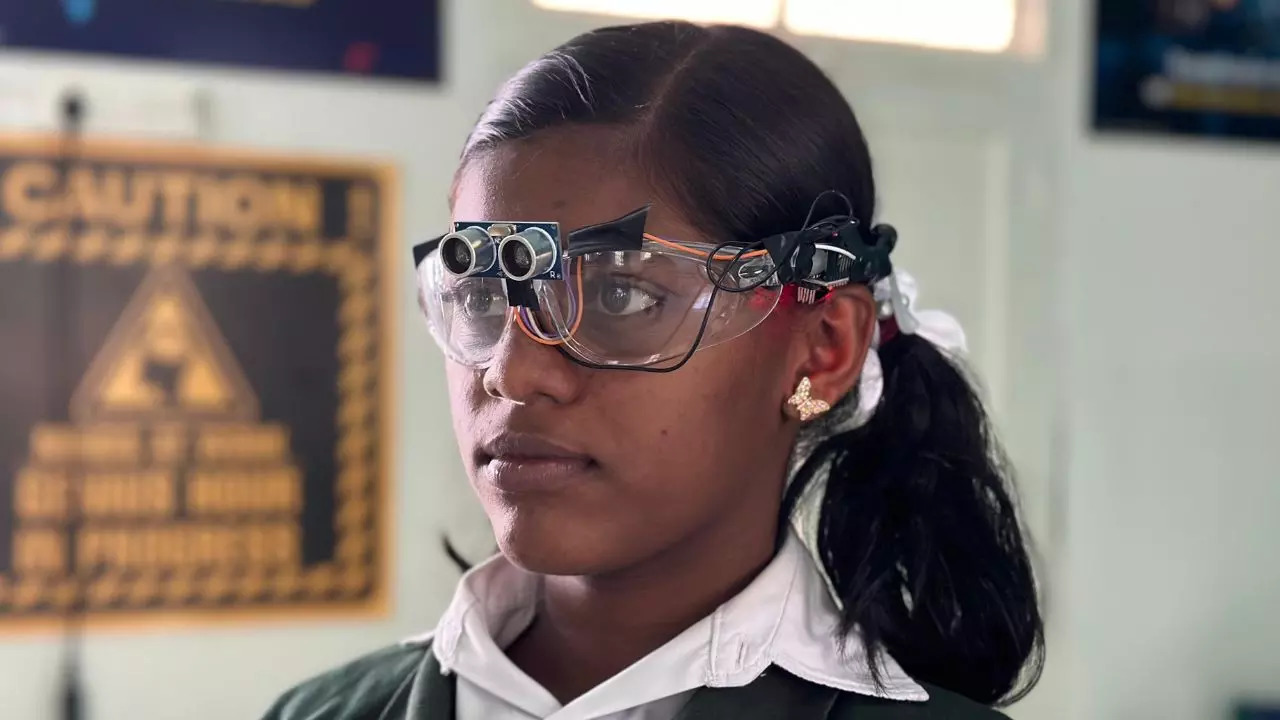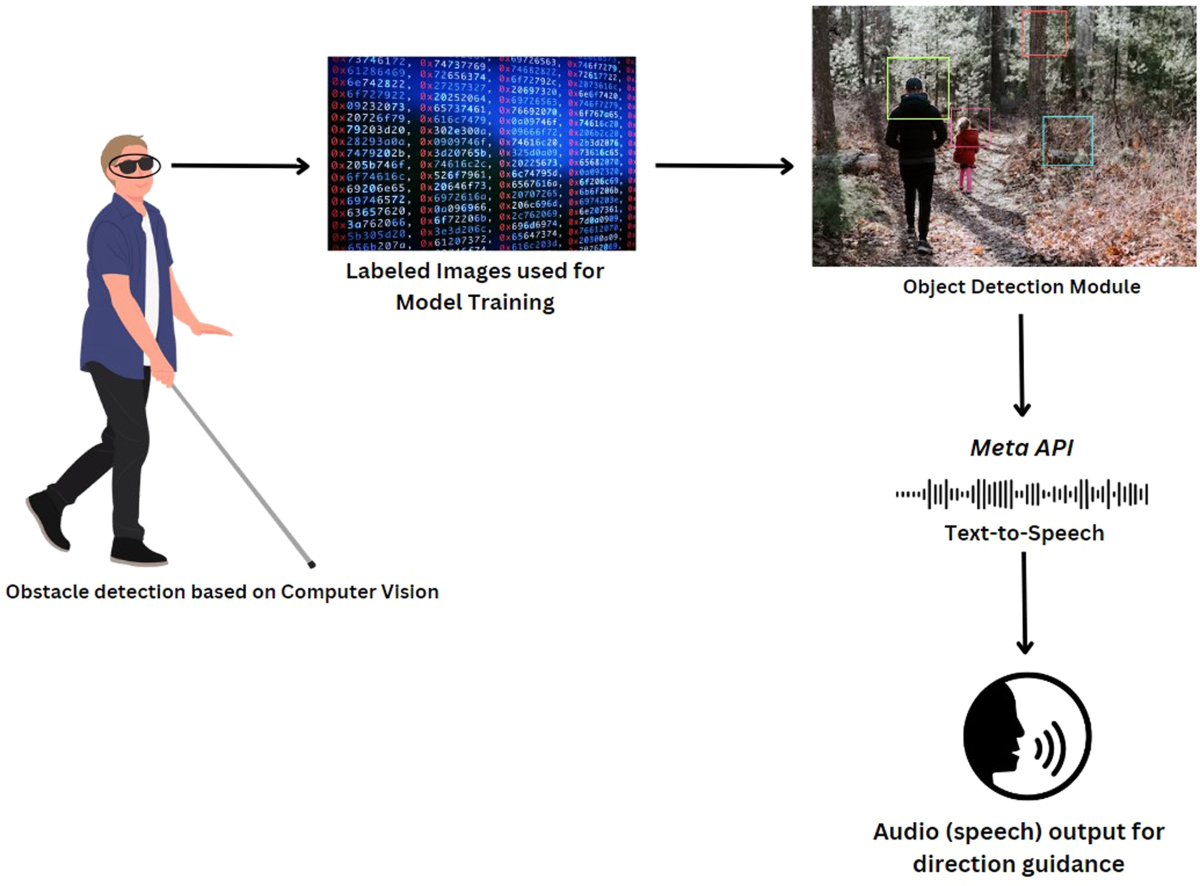Ingenious Solutions in Assistive Technology for Visual Disability
The landscape of assistive modern technology for visual problems is developing swiftly, offering a variety of cutting-edge solutions that boost ease of access and self-reliance. From sophisticated mobile phone applications that facilitate navigation to wearable gadgets created for real-time support, these devices are improving the experiences of those with visual problems.
Innovations in Mobile Phone Applications
Over the last few years, advancements in mobile phone applications have actually significantly changed the landscape of assistive innovation for individuals with visual problems. These applications leverage the powerful sensing units and abilities of modern smart devices to supply individuals with tools that enhance freedom and access in their day-to-day lives.
Notable amongst these innovations are applications created for things recognition, which use the mobile phone's video camera to recognize products and give verbal descriptions. Such functions encourage individuals to navigate their atmospheres better, whether determining items in stores or locating individual belongings at home. Furthermore, text-to-speech applications have improved considerably, allowing users to capture published text with their device's video camera and receive split second audio comments, consequently facilitating analysis and understanding.
Navigation applications tailored for aesthetically impaired individuals have actually additionally arised, providing acoustic support and comprehensive location details. These devices supply vital support for mobility, enabling individuals to go across unfamiliar rooms with self-confidence. In addition, community-driven applications have actually fostered social communication and source sharing amongst individuals with visual impairments, producing a supportive network that improves their lifestyle. In general, smart device applications have come to be indispensable allies in promoting autonomy and accessibility for people with visual impairments.
Wearable Instruments for Navigating
Wearable tools for navigating have actually become a groundbreaking remedy for people with aesthetic impairments, using hands-free support that improves movement and positioning. These tools generally make use of sophisticated technologies, including GPS, ultrasonic sensing units, and expert system, to offer real-time feedback and direction to individuals as they navigate their setting.
One noteworthy instance of wearable navigating technology is smart glasses, which can detect barriers and relay auditory or haptic comments to the user, permitting for reliable and secure motion in different settings. Other gadgets, such as belts and vests outfitted with sensing units, can in a similar way educate users of their environments by offering informs concerning nearby things or modifications in surface.
In addition, several wearable tools incorporate with smartphone applications, allowing customers to customize their navigating choices and obtain customized route suggestions. This customization can dramatically boost the customer experience, equipping people to travel with better confidence and freedom.
As modern technology continues to create, the possibility for wearable navigation gadgets to boost the lifestyle for people with visual impairments continues to be significant, leading the way for more available and inclusive atmospheres.
Smart Home Modern Technology Integration

Moreover, smart home appliances equipped with tactile user interfaces or acoustic responses give intuitive communications that provide particularly to the demands of those with aesthetic impairments. For instance, clever refrigerators can announce their components and expiry dates, while wise stoves can lead individuals via the cooking procedure with audio instructions.
Home automation systems, such as smart doorbells and safety and security video cameras, provide satisfaction by enabling customers to obtain alerts and gain access to live feeds through their mobile phones, enhancing personal security (AI-powered visual aids). Furthermore, combination with mobile phones and tablet computers guarantees that customers can handle their home setting from anywhere within their facilities
As wise home innovation continues to progress, it holds the prospective to transform the living experiences of people with aesthetic disabilities, promoting self-reliance and improving lifestyle in a progressively connected globe.

Educational Tools and Resources
Access to reliable educational devices and sources is important for individuals with weblink aesthetic problems, as it encourages them to engage fully in their learning experiences. Numerous assistive innovations have actually been created to boost accessibility and foster independent discovering. Screen visitors, for example, convert message into speech, enabling trainees to gain access to electronic content effortlessly. AI-powered visual aids. Furthermore, refreshable braille display screens give responsive responses, making it less complicated for learners to connect with composed material.
Additionally, instructional software especially created for visually damaged customers supplies features such as high-contrast modes and adjustable text dimensions. These devices fit diverse learning styles and make certain that pupils can tailor their educational experience to their requirements.
Furthermore, accessibility to audio books and electronic collections increases browse around these guys the variety of offered learning materials, enabling trainees to check out topics comprehensive without the limitations imposed by traditional print sources. Collective platforms that include access features likewise assist in group tasks, making certain that aesthetically damaged pupils can contribute meaningfully along with their peers.
Community Support and Involvement
A durable network of neighborhood support and engagement is important for people with visual disabilities, cultivating an inclusive atmosphere where they can grow. Community organizations, neighborhood campaigning for teams, and volunteers play an essential duty in offering resources, information, and friendship, which are important for improving the top quality of life for those affected by visual problems.
Involvement activities such as workshops, gatherings, and support groups not just facilitate skill development but additionally advertise social communication, reducing feelings of isolation. These campaigns encourage people to share experiences, successes, and challenges, therefore enhancing neighborhood bonds. Additionally, collaborations with local businesses can bring about better accessibility in public spaces, even more incorporating individuals with aesthetic impairments into the community.
Technology also improves community engagement with on the internet platforms that use online assistance teams and sources, allowing people to connect no matter geographical barriers. By utilizing both in-person and digital remedies, communities can develop a detailed assistance network. Inevitably, cultivating cooperation amongst different stakeholders-- consisting of households, instructors, and health care specialists-- makes sure that people with aesthetic impairments get the alternative assistance necessary to browse everyday life properly and with dignity.
Conclusion
Cutting-edge solutions in assistive innovation for aesthetic impairment significantly enhance the lifestyle for people encountering these challenges. The assimilation of smartphone applications, wearable devices, clever home technology, and instructional tools fosters better independence and access. Furthermore, community assistance and engagement additional encourage aesthetically impaired individuals, promoting inclusivity and involvement in various elements of life. Jointly, these developments not only transform daily experiences but additionally pave the method for a much more fair society.
The landscape of assistive modern technology for aesthetic disability is advancing rapidly, presenting an array of ingenious services that improve accessibility and go right here self-reliance. Community-driven applications have promoted social communication and resource sharing among individuals with visual problems, developing an encouraging network that improves their high quality of life. In general, smartphone applications have come to be essential allies in advertising freedom and ease of access for individuals with visual disabilities.
Lots of people with visual impairments are finding better freedom via the integration of wise home innovation.Ingenious remedies in assistive technology for visual impairment significantly enhance the high quality of life for people dealing with these obstacles.